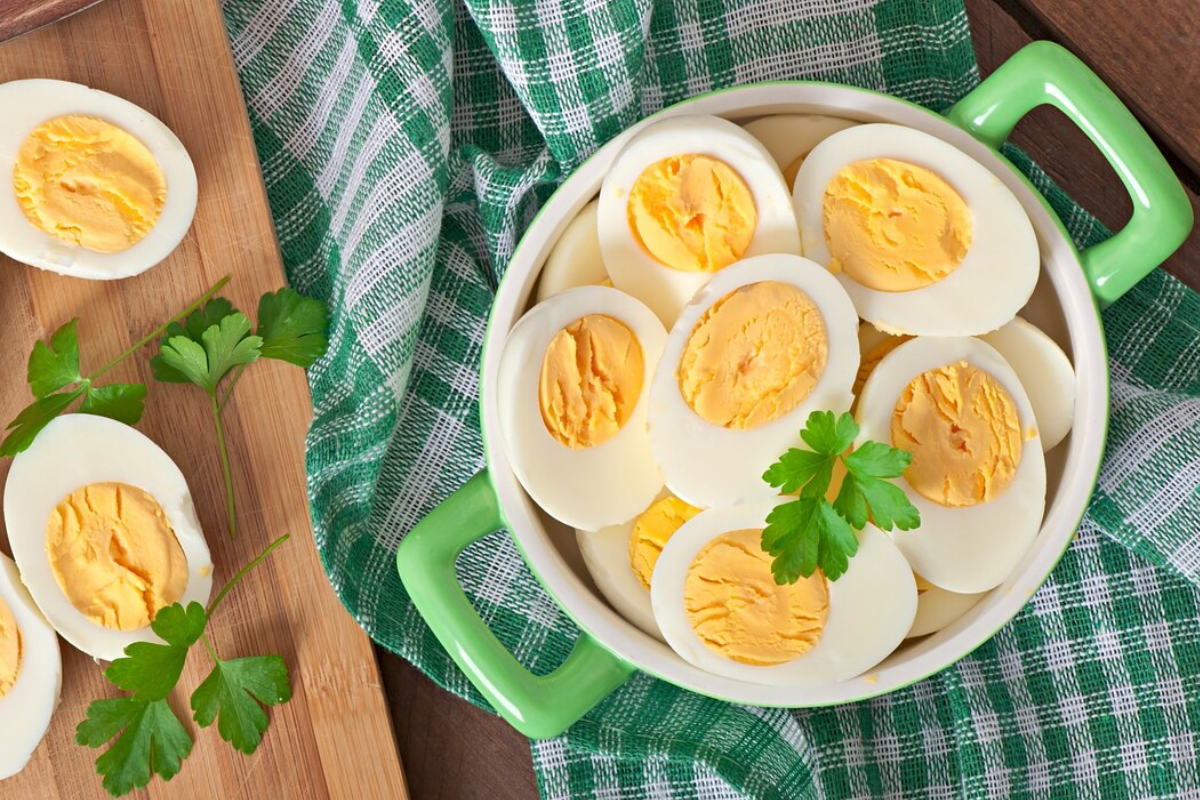Boiling eggs may seem like a basic kitchen task, but it can be surprisingly tricky to get just right. Whether you prefer soft, jammy yolks or firm hard-boiled eggs for salads and snacks, learning how to boil eggs properly can make a big difference in taste, texture, and ease of peeling.
In this guide, we’ll walk through every step of the process — from selecting the right eggs to peeling and storing them — so you never have to second-guess your boiled eggs again.
Choosing the Right Eggs for Boiling
Boiled eggs start with one simple ingredient: eggs. But not all eggs behave the same way when boiled. The age of your eggs can impact the outcome, especially when it comes to peeling.
Fresh vs. Older Eggs
If you’re buying eggs straight from the store, they’re usually a week or two old already — and that’s a good thing. Very fresh eggs tend to cling to their shells when boiled, making them harder to peel. Slightly older eggs (about 7–10 days) allow for easier peeling because the pH level in the white increases over time, reducing the tight bond between the egg white and the shell membrane.
Why Egg Age Affects Peeling?
As eggs age, air slowly seeps into the shell, creating a larger air pocket inside. This makes the boiled egg easier to peel because there’s more space between the shell and the egg white. So, if you’re planning ahead, it’s smart to buy eggs a few days before you want to boil them.
How to Prep Eggs Before Boiling?
Once you’ve chosen your eggs, a bit of simple prep can help make the boiling process smoother and the final result better.
Room Temperature or Cold?
While you can boil eggs straight from the fridge, bringing them to room temperature helps prevent sudden temperature shock. Cold eggs placed in boiling water are more likely to crack. Letting them sit out for about 15–20 minutes before cooking can reduce the risk of breakage and ensure more even cooking.
Washing and Inspecting Shells
Give your eggs a quick rinse under cool water before boiling, especially if you’re using farm-fresh or unwashed eggs. Look for any cracks or unusual spots. A cracked egg can leak during boiling, leading to uneven texture or unsightly results.
Different Methods to Boil Eggs
There’s more than one way to boil an egg. Depending on your equipment and preferences, here are a few common methods that can help you get the results you want.
Stovetop Boiling
This is the most traditional and widely used method. Simply place the eggs in a pot, cover them with water, and bring it to a boil. Once boiling, reduce to a simmer and cook according to your desired doneness. This method gives you full control over the timing and water temperature.
Steaming Method
Steaming eggs over boiling water can actually produce very consistent results. Place eggs in a steamer basket over a small amount of water, cover, and let them steam for the appropriate time. Many people find steamed eggs easier to peel, making this a go-to technique for meal prep.
Electric Kettle or Instant Pot Option
For small batches, an electric kettle can be used to boil eggs quickly. Just be sure it’s safe for food use. Instant Pots or other pressure cookers offer an efficient and hands-off method. They’re especially helpful for large batches, and the steam pressure often results in perfectly peekable eggs.
Boiling Time Guide for Soft, Medium, and Hard-Boiled Eggs
Timing is everything when learning how to boil eggs. Different textures require different cooking times, and a minute or two can change the entire outcome.
Exact Timing for Each Texture
- For soft-boiled eggs with a runny yolk, aim for 6 minutes.
- For jammy or medium-boiled eggs, cook for about 8–9 minutes.
- For fully hard-boiled eggs with firm yolks, 10–12 minutes is ideal.
Start timing as soon as the water begins to boil or after placing the eggs in already boiling water — depending on your method. Either way, consistency is key.
How to Prevent Undercooking or Overcooking?
Undercooked eggs may have raw whites or unstable yolks, while overcooked ones can develop a green ring around the yolk and turn rubbery. Setting a timer is your best friend here. Once the desired time is reached, remove the eggs immediately and place them in cold water to stop the cooking process.
Cooling and Peeling Tips That Actually Work
Even if your eggs are cooked perfectly, peeling them can sometimes be frustrating. A few small steps can make all the difference.
Ice Bath Basics
After boiling, place the eggs in a bowl of ice water for at least 5–10 minutes. This halts the cooking process instantly and firms up the egg white, making peeling easier. Cold eggs also pull slightly away from the shell, creating a gap that helps release the shell cleanly.
Tricks for Easier Peeling Every Time
Gently tap the egg on a hard surface to crack the shell, then roll it under your palm to loosen it. Start peeling from the wider end — this is where the air pocket forms. Peeling under a little running water or inside a bowl of water can also help lift the shell away cleanly.
How to Store Boiled Eggs Safely?
If you’ve made a batch ahead of time, storing your boiled eggs properly helps them stay fresh and safe to eat.
Fridge Life for Peeled vs. Unpeeled
Unpeeled boiled eggs can be stored in the fridge for up to a week. Once peeled, they should be eaten within 2–3 days for best taste and texture. Store peeled eggs in a covered container with a damp paper towel to keep them from drying out.
Signs Your Boiled Eggs Have Gone Bad
If your eggs smell off, have a slimy texture, or show signs of discoloration, it’s best to toss them. Fresh boiled eggs should smell neutral and feel firm, not mushy or sticky.
Common Mistakes and How to Avoid Them
Even a small mistake can lead to disappointing results when learning how to boil eggs. Here’s what to watch out for.
Cracked Shells During Boiling
Cracks usually happen from rapid temperature changes or eggs bumping into each other in the pot. Avoid dropping cold eggs into boiling water. Instead, place them gently in lukewarm water or use a spoon to lower them in.
Green Yolks and Rubbery Whites
A green-gray ring around the yolk is caused by overcooking. It’s safe to eat but not very appealing. Rubbery whites also come from cooking too long or at too high a temperature. Stick to the timing and cooling tips we covered earlier to avoid this.
Conclusion
Boiling eggs doesn’t have to feel like guesswork. By choosing the right eggs, using the best cooking method for your needs, and following simple prep and storage tips, you can master how to boil eggs at home with confidence. Whether you’re after a soft yolk for your ramen or a firm one for your salad, these steps will help you get perfect results every time.
FAQs
1. How long should I boil eggs for hard yolks?
Boil them for about 10–12 minutes to get fully set yolks that are firm but not chalky.
2. Why are my boiled eggs hard to peel?
It could be because they’re too fresh. Slightly older eggs peel more easily. Also, cooling them in an ice bath after boiling helps a lot.
3. Can I boil eggs straight from the fridge?
Yes, but starting with cold eggs increases the risk of cracking. Letting them sit at room temperature for a few minutes is better.
4. What’s the best way to tell if a boiled egg is done?
Timing is the most reliable method. However, you can also spin the egg — a hard-boiled egg spins smoothly, while a soft or raw one wobbles.
My name is Mustafa, and I have been blogging for over 5 years. I am passionate about sharing complete, accurate, and helpful information with my readers. Along with managing content on The Matcha Read, I also contribute blog posts to premium websites. My goal is to provide valuable insights in a clear and easy-to-understand way, so every reader walks away with useful knowledge.










